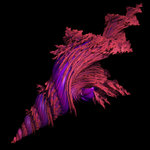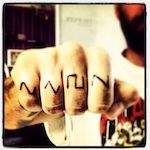| Author
|
Setting up the Filter Envelope .. ??
|
WAVELOGIX
Wavelogix

Started Topics :
136
Posts :
1214
Posted : Mar 7, 2005 22:48
|
hey guys ,
ok i set up the filter [ cutoff / resonance ] .. but when it comes to setting up the filter envelope .. thats where i get a bit lost !!
the filter depth control has a lot of effect on how the filter changes the sound ...
but what is the corrrect way to set up the filter envelope ??
first set the filter depth control to some random value and then start tweaking the filter envlope accordingly and then adjust the depth paramter again ??
or first roughly setup the filter envelope and then slowly increase the depth knob until it sounds right ??
pls help me on this ! |

|
|
Trip-
IsraTrance Team

Started Topics :
101
Posts :
3239
Posted : Mar 8, 2005 08:43
|
You can do everything randomly of course...
But for some facts, setting the filter envelope depth/amount will set the envelope strength on the cutoff. Smaller values will make the attack amount smaller, as with the rest DSR. The amount sets the upper/lower limit of the control. Higher amounts will have the lower limit go lower - and the higher limit go higher respectively.
        Crackling universes dive into their own neverending crackle... Crackling universes dive into their own neverending crackle...
AgalactiA |

|
|
Boobytrip
IsraTrance Junior Member

Started Topics :
39
Posts :
988
Posted : Mar 8, 2005 11:11
|
|
Chandan: Just fiddle around a bit with the BALANCE between the filter envelope decay and the filter envelope amount. Low filter envelope decay values combined with high 'amount' values will result in high frequency spikes that are gone really fast. And high env decay values combined with low amount values will result in longer lasting (huh huh huh) higher frequencies. |

|
|
shellbound
IsraTrance Junior Member

Started Topics :
14
Posts :
601
Posted : Jun 18, 2009 19:03
|
can someone help me VISUALIZE the effects of a filter envelope on a band pass filter (cutoff) specifically?
correct me if i'm wrong, but the way i visualize this for a low pass filter is the following:
envelope's starting frequency is the cutoff. the attack determines the amount of time it will take the filter to open up from the cutoff frequency to the frequency relative to the envelope amount. the decay indicates the time it takes for the filter to close until the frequency specified by the sustain. and release indicates the amount of time it takes for the filter to return to the cutoff frequency after the note stops being played (note off). so there are 3 frequencies involed.
ex: cutoff set to 300Hz. it takes X (attack)amount of time to get to 500Hz (specified by the envelope amount) and then Y (decay) amount of time to get to 400Hz (sustain). after Z (release) amount of time the filter closes to 300Hz (cutoff).
for a High Pass filter, this is reversed, so you indicate the minimum frequencies, instead of the maximum.
but what happens with a Band Pass filter? which way does it go? or is this something you can only specify if you have the option of positive and negative envelope shapes, like in Albino for example.
        https://soundcloud.com/dead-end-dance https://soundcloud.com/dead-end-dance
https://soundcloud.com/shellbound |

|
|
PoM
IsraTrance Full Member

Started Topics :
162
Posts :
8087
Posted : Jun 18, 2009 19:19
|
|
positive or negative env amount is what matter or maybe reversed envelop, i m not sure.. on some synths you can choose it, maybe on others it depends how it s designed but too me it s the same for all the filters type , it s not reversed with hp filters but maybe i m all wrong |

|
|
shellbound
IsraTrance Junior Member

Started Topics :
14
Posts :
601
Posted : Jun 18, 2009 19:31
|
that's if the envelope amount is bipolar. is it bipolar in majority of synths? in albino, it's unipolar, but you have the positive/negative shapes. in virus a, it seems to be unipolar (which is why i started thinking about this). i just checked the manuals for a bunch of other synths and majority seem to have bipolar env. amount.
        https://soundcloud.com/dead-end-dance https://soundcloud.com/dead-end-dance
https://soundcloud.com/shellbound |

|
|
shellbound
IsraTrance Junior Member

Started Topics :
14
Posts :
601
Posted : Jun 18, 2009 19:35
|
|
PoM
IsraTrance Full Member

Started Topics :
162
Posts :
8087
Posted : Jun 18, 2009 19:37
|
|
you mean what you hear is reversed with hp filters, but the modulation is the same than with a lp or band pass filters ,the filter type dosen t matter |

|
|
Nectarios
Martian Arts

Started Topics :
187
Posts :
5292
Posted : Jun 18, 2009 19:42
|
What's to explain about this? Provided you know the effect of the parameters (cut-off, filter ADSR modulation index, attack, decay, sustain, release), just play around until you get to what you like.
       
http://soundcloud.com/martianarts |

|
|
shellbound
IsraTrance Junior Member

Started Topics :
14
Posts :
601
Posted : Jun 18, 2009 19:51
|
Quote:
|
On 2009-06-18 19:42, disco hooligans wrote:
What's to explain about this? Provided you know the effect of the parameters (cut-off, filter ADSR modulation index, attack, decay, sustain, release), just play around until you get to what you like.
|
|
sure. and that's what i've been doing. but there's a difference between twisting a knob and hearing the effect and actually picturing in your mind what happens to the sound. it was very easy to grasp what an amp envelope does. but i always had difficulty picturing what is happening for filters. and if i can't picture it and can't explain it in words clearly, then that means i don't fully understand it.
i also think about such things a lot at work where (unfortunately) i don't have a synth in front of me to experiment.
just trying to twiddle knobs with a purpose...
        https://soundcloud.com/dead-end-dance https://soundcloud.com/dead-end-dance
https://soundcloud.com/shellbound |

|
|
PoM
IsraTrance Full Member

Started Topics :
162
Posts :
8087
Posted : Jun 18, 2009 19:53
|
|
i noticed on some sounds it can happen than the amount of modulation and the envelop parameters have a direct relation with the amounth of processing the sound ll need to sit well in the mix (for example on some synth when doing a bassline too much envelop modulation on the filter and the sound have too much "dynamic" and don t sound tight and feel like it need to be compressed to sit well in the mix, it sames for leads , too much and you can go from a tight controlled mix to something that sound all other the place or need compression) |

|
|
Nectarios
Martian Arts

Started Topics :
187
Posts :
5292
Posted : Jun 18, 2009 20:12
|
Quote:
|
On 2009-06-18 19:51, septa wrote:
sure. and that's what i've been doing. but there's a difference between twisting a knob and hearing the effect and actually picturing in your mind what happens to the sound. it was very easy to grasp what an amp envelope does. but i always had difficulty picturing what is happening for filters. and if i can't picture it and can't explain it in words clearly, then that means i don't fully understand it.
i also think about such things a lot at work where (unfortunately) i don't have a synth in front of me to experiment.
just trying to twiddle knobs with a purpose...
|
|
That's fine. I'll start with a basic explanation of things, anything you want to further talk about, we'll have chat about it on here, innit.
I'll start from the basics, to hopefuly help some complete n00bs as well.
Take a low pass filter, with a slope of, say 24dB/8ve. When you start lowering the cut-off, you basicaly filter out the higher frequencies/harmonics, that the oscillator produces, by the determined slope, in this case the gain reduction is 24dB per octave of the cut-off frequency.
The usual practise in trance basslines, is setting an envelope to modulate the filter cut-off at each note trigger.
The modulation index/amount/depth is how much modulation that envelope will have on the cut-off.
The attack is the time it will take for the cut-off frequncy, to reach the new cut-off frequency, determined by the modulation index. In trance basslines we set the attack time to 0, so on each note trigger the cut-off frequency is instantly at the new frequency, determined by the modulation index.
The decay time is the time it will take for the filter to close from the frequeny detrmined by the modulation index, to the frequency were we have set when turning the cut-off knob.
There is also the sustain and release parameters of the filter ADSR, but they are redundant (well for me anyway) for the typical psy-trance bassline.
Hope this helps.
       
http://soundcloud.com/martianarts |

|
|
shellbound
IsraTrance Junior Member

Started Topics :
14
Posts :
601
Posted : Jun 18, 2009 20:22
|
thanks for the explanation. so then it seems i have the correct understanding of how this works (since i pretty much wrote the same thing). except that i was incorrect about stating it works in reverse for HP. it always works the same way for all filter types (like pom said), but the "new" frequency is dependent by the envelope amount which is bipolar in most cases. so for negative envelope amounts the new frequency is going to be below the cutoff frequency and for positive envelope amounts it's going to be above the cutoff (regardless of the filter type).
right?
while we are on a subject of filters, what exactly is a self-oscillating filter? i know it has something to do with setting resonance all the way up and the filter producing a steady tone on its own (almost like an oscillator). is that pretty much what it is? is there more to it?
        https://soundcloud.com/dead-end-dance https://soundcloud.com/dead-end-dance
https://soundcloud.com/shellbound |

|
|
Nectarios
Martian Arts

Started Topics :
187
Posts :
5292
Posted : Jun 18, 2009 20:29
|
yes (I think so anyway, it sorta reverses the envelope effect, which I am not sure has the same result when you actually get to hear it...haven't used negative ADSR filter settings for a long time).
and yes, a self oscillating filter becomes a sine wave oscillator.
       
http://soundcloud.com/martianarts |

|
|
PoM
IsraTrance Full Member

Started Topics :
162
Posts :
8087
Posted : Jun 18, 2009 20:30
|
|